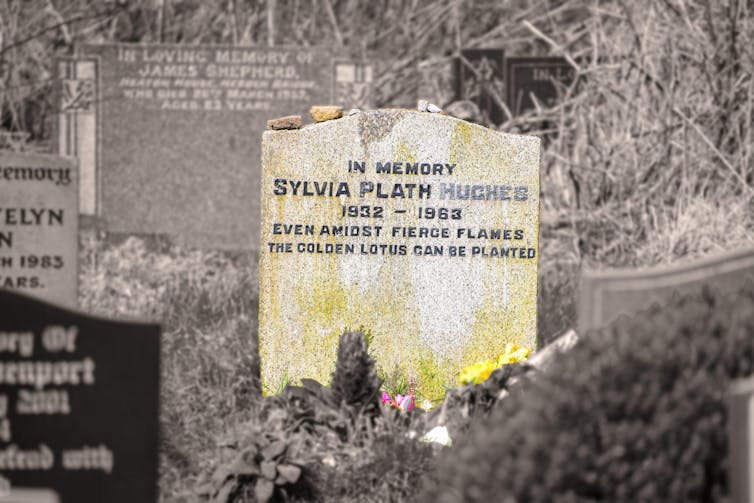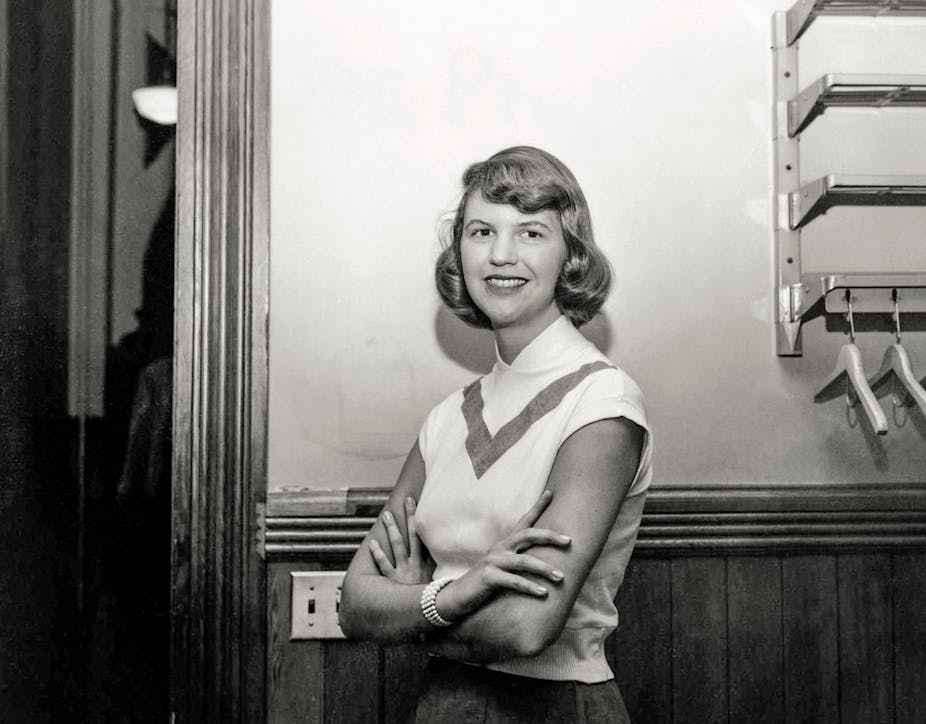This year marks the 60th anniversary of Sylvia Plath’s death. Had Plath enjoyed the longevity of her poetry, she would have turned 90 in October 2022.
So significant was Plath’s contribution to modern poetry (her most recent biographer, Heather Clark, describes her as “perhaps the best-known American woman poet of the 20th century”) that in a sense contemporary poets can’t help but write “after Sylvia”.
Plath’s literary fame only arrived after her death. The sole poetry collection published in her lifetime, The Colossus (1960), had a print run of just 500 copies and her novel, The Bell Jar (1963), received lukewarm reviews and never a bestseller in her lifetime.
Many poets of my own generation, schooled in the 1980s and 1990s, first encountered Plath’s work as teenagers. The Bell Jar and her posthumously published collection Ariel (1965) were either popular curricular texts, or likely to be recommended to precocious students by cool teachers.
Such was my own experience when I, tugging tatty sleeves down over my hands, confessed to a supply teacher that I “liked writing poetry”. Doubtless she wasn’t encouraging me to shoplift a copy of Ariel the following weekend, yet after reading on the book shop carpet for a transfixed half-hour, that’s exactly what I did.
It is difficult to outgrow an influence like that. My own poem Small Flame For Sylvia was an attempt to stare that problem down.
A complex literary foremother
Plath looms large but often ambivalently in the literary imagination of contemporary poets. Poet Emily Berry wrote of Plath in 2022:
We don’t forget we don’t forget
All night your stars blaze on the hill
Relationships with literary foremothers (and fathers) may be equal parts tender and oppressive. But the astonishing imagistic (poetry that favours precise imagery) linguistic and mythic energy of Plath’s work – to say nothing of her frank and unapologetic literary ambition – freed women’s poetry from niceness and modesty.
It also emancipated post-war poetry in English more generally from the tired gentility of the New Critical and Movement approaches.

Plath did not live to see the Women’s Movement – whose activism sought equal rights and opportunities for women – and was by most accounts no feminist in her lifetime. But her poetry anticipated feminism’s assertion that the personal is political in its insistence that domestic topics such as night feeds and beekeeping could, through her art, be rendered as powerfully as any other subject.
The slow but steady turn from biographical to historical criticism of her work enables readers to consider some of her controversial imagery. This include the Holocaust, but also the atom bombs, in Fever 103°:
“Greasing the bodies of adulterers / like Hiroshima ash.”
And racial tension of the Cold War in Cut:
“The satin on your / Gauze Ku Klux Klan / Babushka.”
Such allusions raise difficult and important questions about what a poet’s acceptable frame of reference can be.
Writing back to Plath
The shadow cast by Plath over contemporary poetry may also be experienced as one of frank alienation. Her phrasing can disturb with sudden bombshells of casually racist language, including the N-word.
This language is challenged in poet Degna Stone’s essay Lines that Jar. Such powerful instances of “writing back” as Stone’s essay are a part of both Plath’s legacy and the necessary project of writers, readers and critics towards decolonialising literature in English.
It should be considered, however, that for every reader like Stone, there may be many others who feel repulsed or silenced by this facet of Plath’s work.
Part of the task of the contemporary poet is to take Plath’s stylistic brilliance forward into a new century in as many ways as possible, while addressing this complicated legacy – and to let the woman herself rest in peace.

